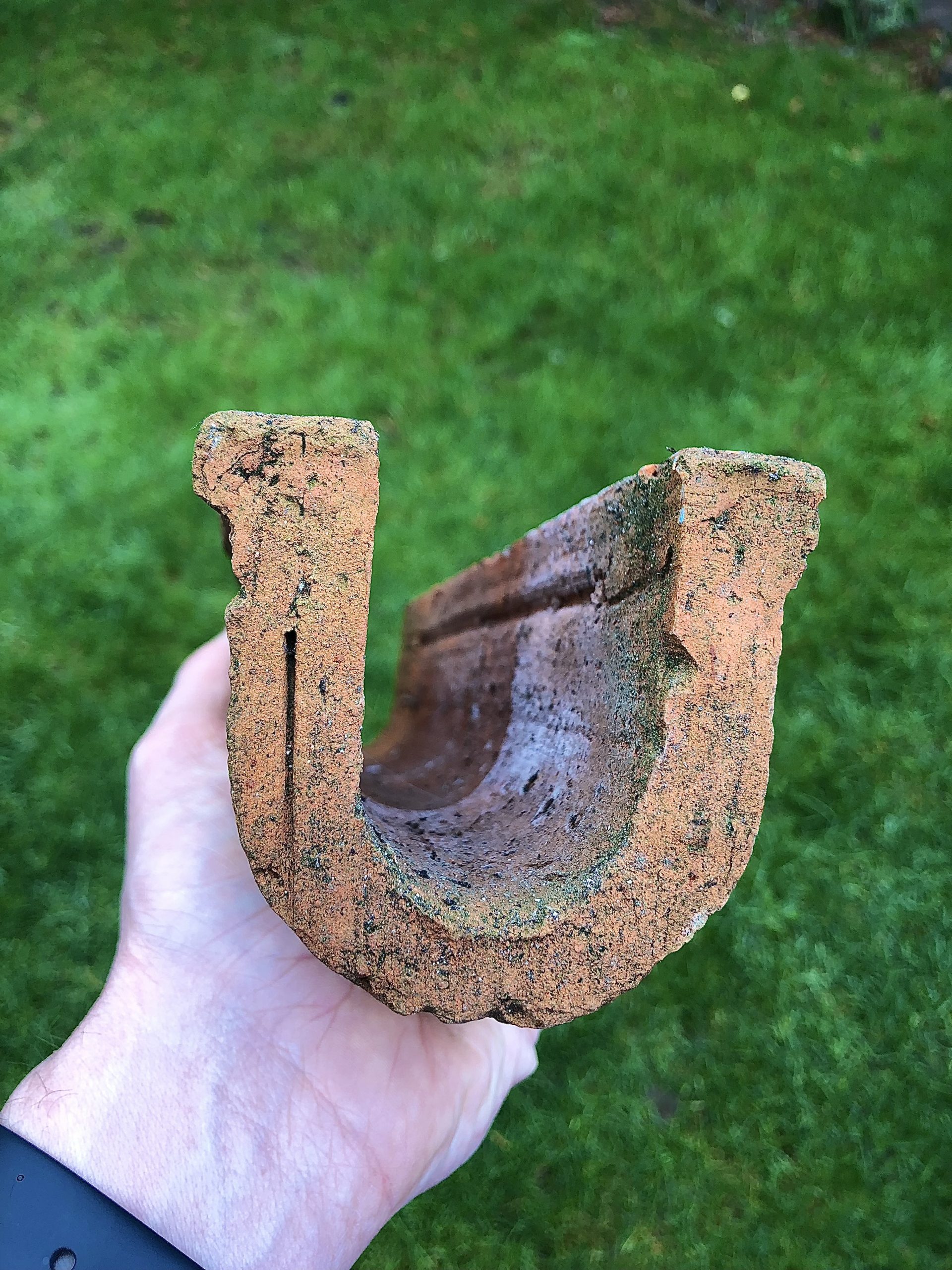
Land drain – French drain – horse shoe tile drain
By: admin | Posted on: March 8, 2022
What I have found is that many people don’t know how land was drained around a building, and that sub soil / land drains were used to essentially help to prevent rising damp as stated in the Byelaws. Unfortunately trying to determine if you have any form of land drainage that is blocked is pretty much impossible. The only way to find them, or see if you have any sub soil drainage without digging up the complete garden is to use ground penetrating radar. Ground penetrating radar surveys will find all forms of below ground drainage to include land drains, french drains, sub soil drainage, culverts, wells, and even cisterns. It isn’t unusual though that whilst your building didn’t have any form of land drainage installed originally, that somebody has installed some from of modern drainage like a French drain. I’ve lost count of the amount of these i’ve found where the building is absolutely saturated, and know body can work out why. Again, it comes back to my earlier point about ground penetrating radar, as the only realistic way of eliminating or finding a french drain. French drains are often recommended as a sympathetic damp repair solution, and this is often recommended by conservation experts. But lets be realistic here, if a French drain is installed 1 meter away from a building 1 meter deep, what is this really expected to do? One thing for sure you will be guaranteed a damp wall with rising damp symptoms.
Land drains have been used since the Roman times to drain the land. It is also well documented that land drains have provided a solution to help with flooding of fields etc, and agricultural drainage using land drains was a solution. This helped to ensure the farmers could gain maximum yield from crops, this making well drained land more valuable.
What I have found interesting when trying to understand excess moisture within a building like rising damp is that it can often be complex to find the root cause. During my research one of the things that I found very interesting is that drainage of sub soil, and prevention of damp was specified prior to the introduction of a physical damp proof course. The earliest I could find it mentioned local to me in the Bye-laws of the Warminster Wiltshire Local Board wasin 1868. It is virtually impossible to find all the local byelaws from all my local towns, bearing in mind most of the ones im looking for are around 170 years old. I would have thought sub soil drainage was at least introduced in the Byelaws from 1850’s like other parts of the UK. As you can imagine I have found land drains previously just by luck when lowering ground levels to reduce damp issues. By finding the land drains, and the many issues with bodged up French drains, this was the reason for purchasing ground penetrating radar. It is really the only solution for potentially eliminating, or finding the defects that saturate the walls of buildings.
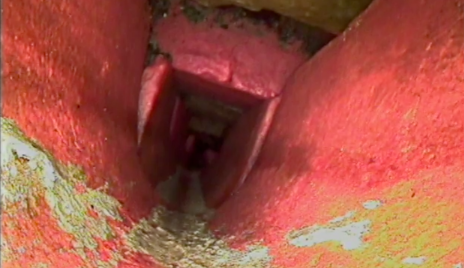
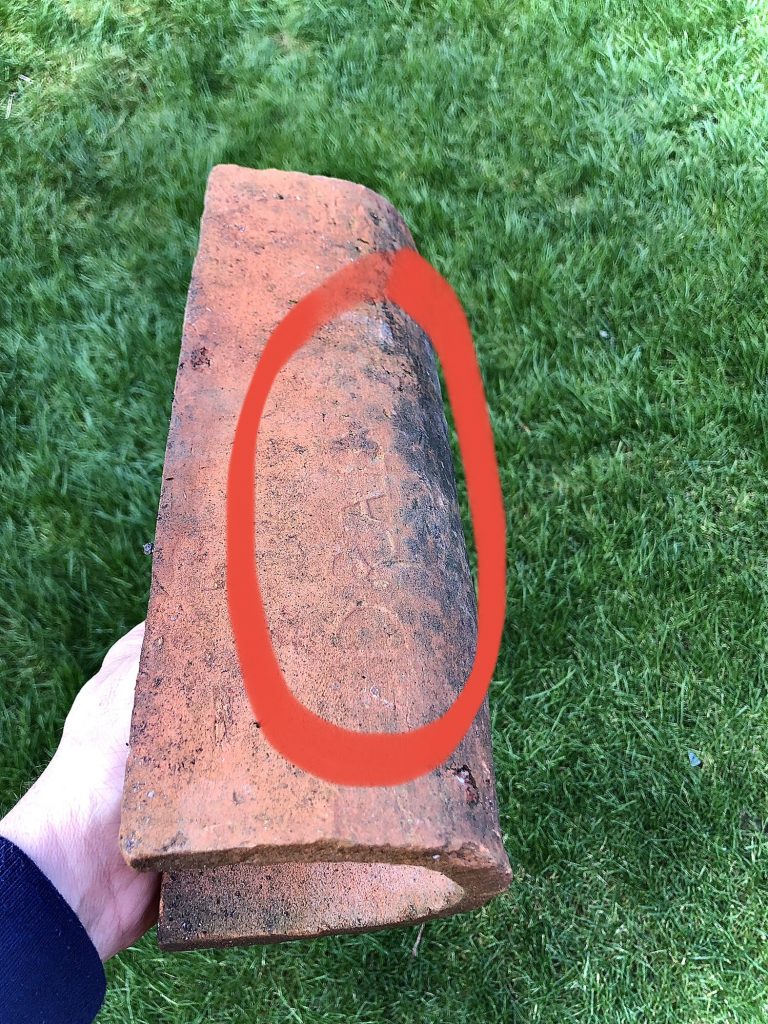
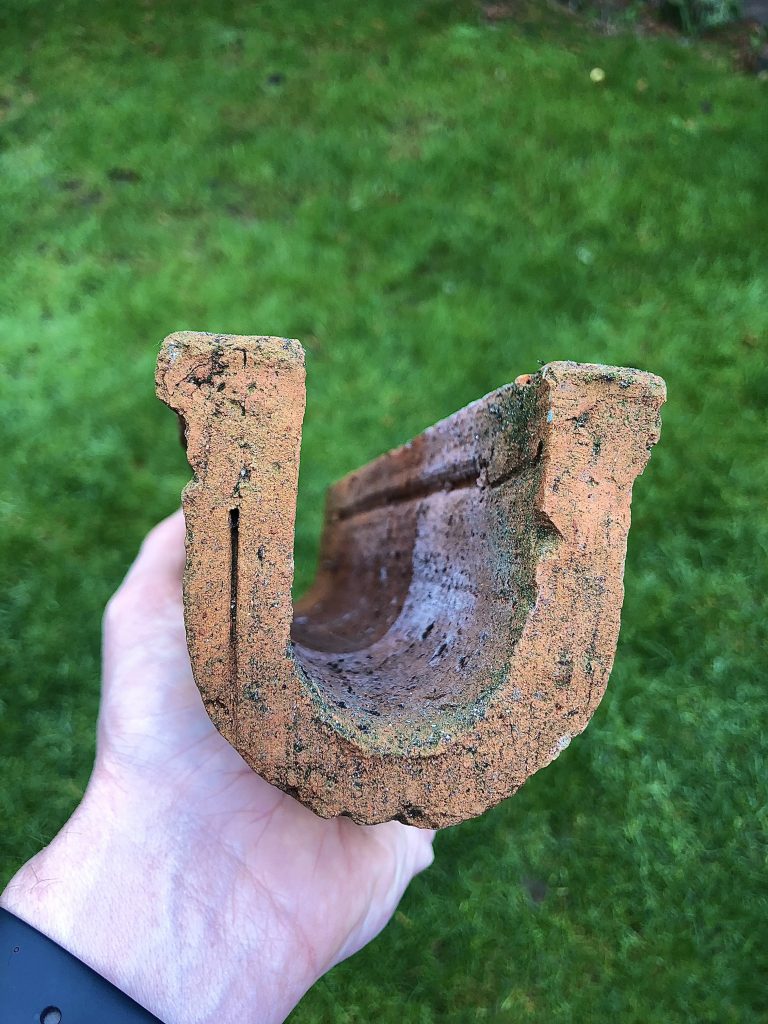
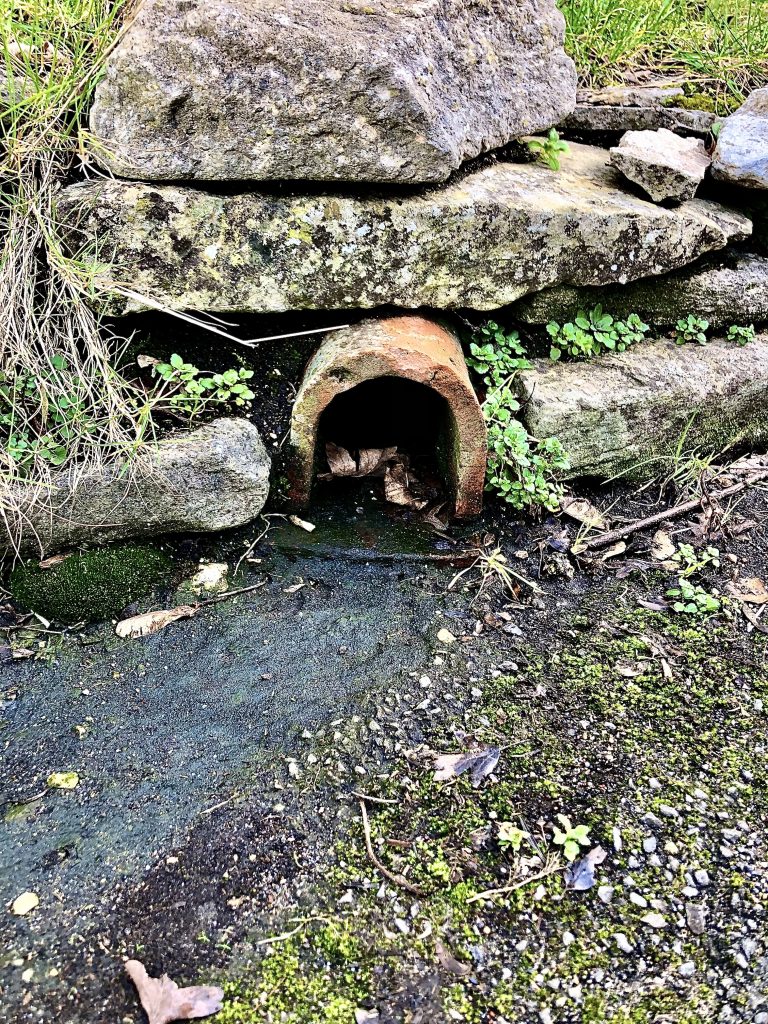
Ground penetrating radar was used to identify and map drains, and also to map and identify the depth and size of the soak away
If you need to know the price of a ground penetrating radar survey you can ring the office on 01225 769215 or email enquiries@completepreservation.co.uk

